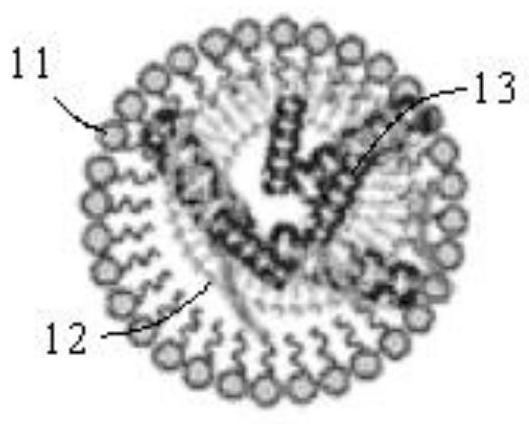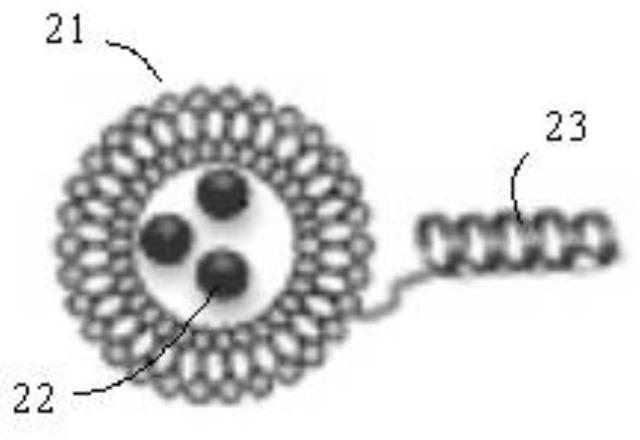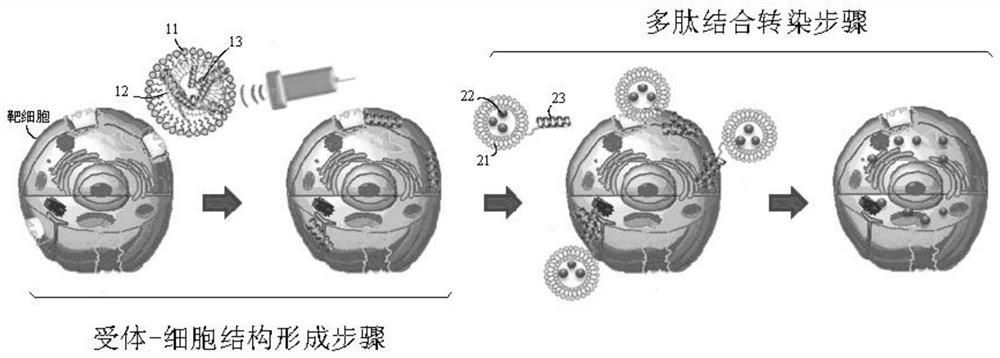Receptor-transfected microvesicles, ligand-transfected microvesicles, and two-stage guided cell transfection methods for cell transfection
A receptor and microbubble technology, applied in the field of cell transfection, can solve the problems of low efficiency of lipid transfection, difficult to effectively achieve treatment, carcinogenesis, etc., and achieve the effect of avoiding risks such as carcinogenesis, low risk of carcinogenesis, and small side effects
- Summary
- Abstract
- Description
- Claims
- Application Information
AI Technical Summary
Problems solved by technology
Method used
Image
Examples
Embodiment Construction
[0029] see figure 1 , the receptor transfection microvesicles for cell transfection provided in the preferred embodiment of the present application, structurally include receptor microvesicles 11, acceptor microvesicles 11 are coated with acceptor liposomes 12, and accept The body transfection microvesicles are lipid microvesicles of micron scale, and the acceptor liposome 12 is a positively charged liposome with a particle size of nanometer scale. Receptor liposome 12 passed through the artificial receptor R A Modification of the artificial receptor R A It is a polypeptide chain, and its amino acid sequence from N-terminal to C-terminal is: (KIAALKK) 3 .
[0030] see figure 2 , the ligand transfection microvesicles for cell transfection provided in the preferred embodiment of the present application structurally include ligand liposomes 21 and nucleic acid 22 to be transfected contained in the ligand liposomes 21 . Ligand liposome 21 is a positively charged liposome, an...
PUM
 Login to View More
Login to View More Abstract
Description
Claims
Application Information
 Login to View More
Login to View More - R&D
- Intellectual Property
- Life Sciences
- Materials
- Tech Scout
- Unparalleled Data Quality
- Higher Quality Content
- 60% Fewer Hallucinations
Browse by: Latest US Patents, China's latest patents, Technical Efficacy Thesaurus, Application Domain, Technology Topic, Popular Technical Reports.
© 2025 PatSnap. All rights reserved.Legal|Privacy policy|Modern Slavery Act Transparency Statement|Sitemap|About US| Contact US: help@patsnap.com



